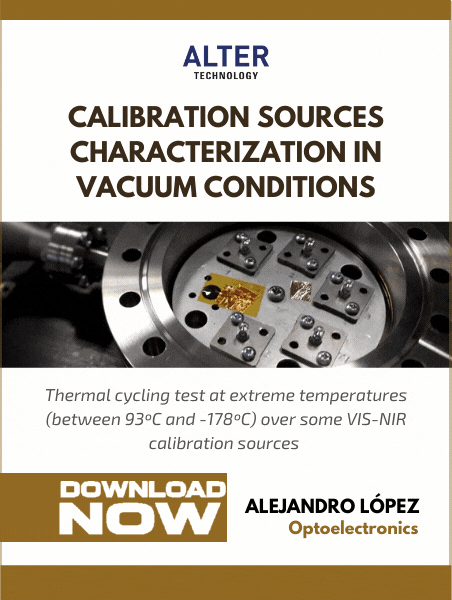Calibration sources characterization in vacuum conditions
- Posted by Alejandro López Moya
- On September 23, 2021
- 0

Thermal cycling test at extreme temperatures over some VIS-NIR calibration sources
Sometimes, customers request some particular test over their components, looking to know how they behave in extreme conditions (under vacuum, extreme temperatures, and even in different atmospheres when components are part of interplanetary missions).
One of our customers requested that we carry a thermal cycling test at extreme temperatures (between 93ºC and -178ºC) over some VIS-NIR calibration sources (five samples at a time). At the same time, these sources were tested in vacuum conditions, and electro-optical characterization at different temperatures during cycling was requested. To go even further, the components needed to be tested in a clean environment.
TEST EXPERTISE
Download the success case
- IR SOURCES THERMAL VACUUM CYCLING CHARACTERIZATION - February 11, 2022
- Lasers Endurance Characterization in Vacuum Conditions – Test Setup - January 25, 2022
- Calibration Sources in Vacuum Conditions - January 13, 2022

0 comments on Calibration sources characterization in vacuum conditions